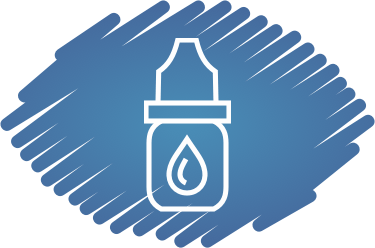Do your eyes feel uncomfortable or tired after staring at a screen for too long? Poor lighting, LED screens, out-of-focus images, and many other factors can all contribute to eye strain. It usually occurs when your eyes are overworked for too long. But how long does this annoying feeling stick around? Will it eventually go away?
Eye strain is almost always temporary, and should go away within a few minutes or hours. But the discomfort could linger longer if you don’t change tasks or take steps to address it. It’s a good idea to check in with your optometrist to pinpoint the exact cause and find ways to alleviate your eye strain.
Understanding Eye Strain
Eye strain, or eye fatigue, is a common issue that arises when your eyes get tired from overuse. It’s typically caused by activities that demand intense focus for long periods, such as reading small print on a screen.
While eye strain is certainly uncomfortable, it wouldn’t cause any permanent damage to your eyes or your vision on its own.
Symptoms of Eye Strain
Eye strain is easier to remedy if you know the signs. Common symptoms of eye strain include:
- Sore, tired eyes
- Excessive tearing
- Dry eyes
- Burning or itching sensation
- Blurred or double vision
- Headaches
- Sore neck, shoulders, or back
- Increased sensitivity to light (photophobia)
- Difficulty concentrating
- Struggling to keep your eyes open
What Causes Eye Strain?
The most common causes of eye strain include:
- Prolonged screen time
- Working or reading in low-light
- Wearing the wrong prescription
- Driving long distances
How To Treat Eye Strain

The best way to treat eye strain is to practice preventative measures and recognize the symptoms if they start. Eye strain can come back, especially if you continue doing activities that trigger it.
Fortunately, you can take simple steps to reduce eye strain in your daily life:
- Follow the 20-20-20 rule: When using screens up close, every 20 minutes, look at something 20 feet away for about 20 seconds. This helps your eyes relax and take a break.
- Use proper lighting: Make sure your work and living spaces are well-lit to reduce strain.
- Adjust your screen settings: Modify the contrast, font size, and brightness on your devices to more comfortable levels to avoid straining your eyes.
- Set up an ergonomic workspace: Position your screen at eye level and ensure your chair is comfortable.
- Blink regularly: When focusing on close tasks, remember to blink often to keep your eyes moist. Use drops if you need to, especially if you wear contact lenses.
- Stay hydrated: Drinking plenty of water helps keep your eyes moisturized.
- Use your glasses or contact lenses: Wear them as recommended, and make sure they are clean, scratch-free, and have the correct prescription.
We know the symptoms of eye strain to look for, but if you experience significant pain, light sensitivity, or frequent headaches, seek medical attention immediately.
Is Eye Strain Temporary?
Eye strain is usually temporary. Symptoms should dissipate after a few hours, sometimes even less. If you are experiencing chronic eye strain, it could be a symptom of another undiagnosed vision problem. It’s important to visit your optometrist regularly to ensure your sight is both healthy and comfortable.
Find Relief from Sore Eyes
If you haven’t seen your optometrist within the last 12 months, or you’re experiencing changes to your vision or eye comfort, book an appointment today. Our team at Flamborough Family Eyecare prioritizes your visual well-being because your life is worth seeing!


















